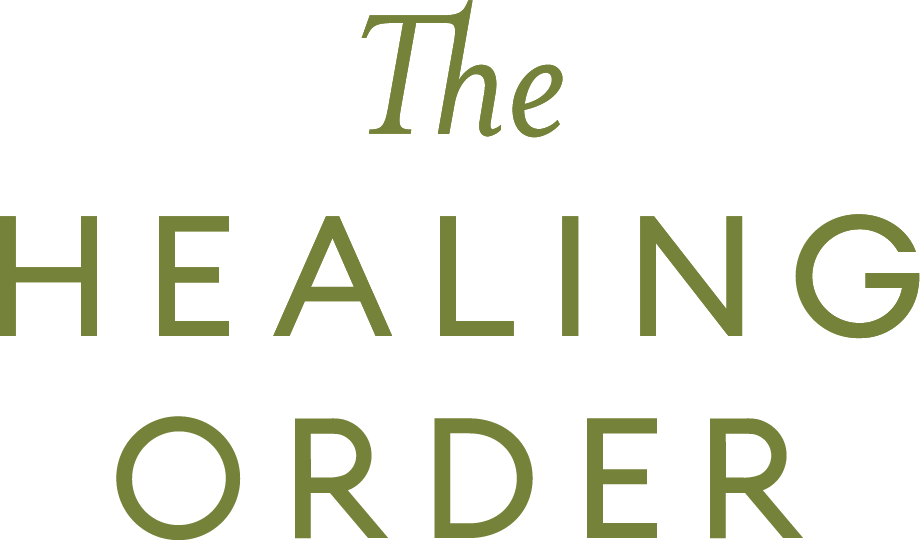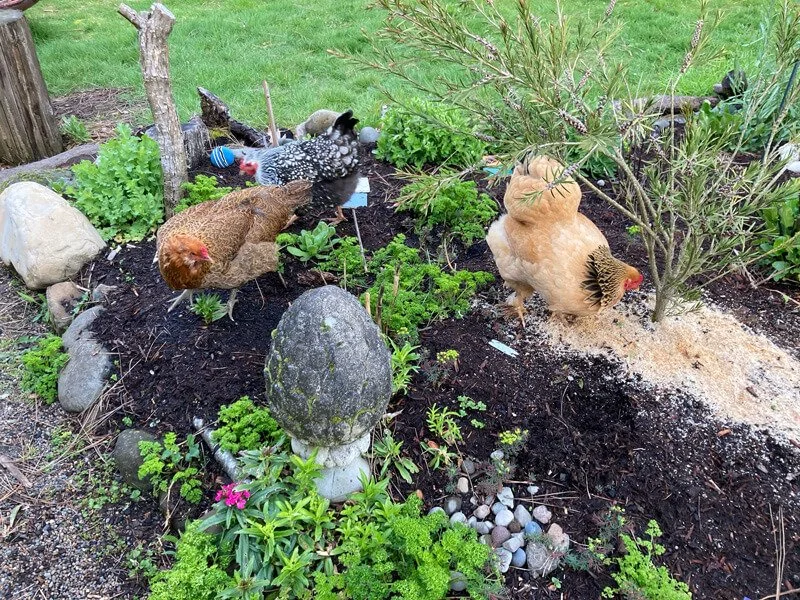What’s Growing in My Garden? Parsley!
By Dr. Christopher Metro
Nutrient dense parsley grows among other medicinal herbs while chickens roam freely
Right now in my garden, I can hear the wind chimes dance with the varied breezes between sweet sun spells and sour stretches of rain.
I am often asked what I am up to in the garden this time of year, and the answer usually involves my favorite pastime - weeding! Fortunately one type of plant that grows like a weed this time of year is parsley, a superfood for the springtime diet. Nutrient-dense and bursting through the early spring chill, parsley concentrates an array of vitamins, antioxidants and minerals to stave off the seasonʼs harsh weather conditions. When consumed as part of any meal or diet plan, one can guarantee the abundant nutrients of parsley will improve many functions needed throughout the body this time of year.
Parsley growing in Dr. Metro’s garden
For the immune system, parsley offers vitamins A and C and many flavonoids to boost our health defenses and to balance allergic tendencies. For the digestive system, parsley is a carminative that enhances digestive secretions and aids the much needed springtime liver cleansing from the long winter. For the urinary system, parsley gently provides a diuretic push to clear toxins and boost adrenal strength for the lengthening daylight hours. For the nervous system, parsley adds to and improves the absorption of key nutrients in the diet for many functions, including vision, hearing, and memory. For the cardiovascular and musculoskeletal systems, parsley boasts high levels of Vitamin K to enhance heart health and circulation along with bone density. Studies have also demonstrated the blood sugar balancing benefits of parsley, finding both better blood sugar levels with regular consumption as well as improved pancreatic function.
The superfood parsley growing freely
Overall, I think these broad-based therapeutic benefits to parsley are why we often find it included in so many healthy traditional food recipes. A few examples range from the simple European pesto to a fancy South American chimichurri. Currently in Oregon, we are still dealing with the lingering acute cold and flu season. A common prescription for nutritional support is the “Bieler Broth,” a simple and effective soup recipe from the famous Dr. Henry Bieler, MD in his book, Food is Your Best Medicine. The cornerstone of the recipe is the combination of parsley with green beans, zucchini and celery. The parsley is critical to boosting the nutritional profile of the broth to benefit electrolytes that support the adrenal system. Dr. Bieler wrote books that made whole-food nutrition popular to many across the US, and Bieler Broth became a lasting fixture to many clinical and hospital treatment plans.
I planted parsley from seed only once in my garden years ago, and now this generous medicinal plant continues to maintain a presence year-round. Requiring so little garden maintenance, the plant is more than happy to continue to reseed on its own. Popping up here or there and wherever it finds convenient, my only chore is to pick fresh sprigs for our daily home cooked meals to keep this prolific plant happy in our garden. I use fresh parsley for most all my meals, finding the flavor and nutritional benefits important and complementary to any dish we conjure. My favorite approach is snipping a few fresh sprigs to mince and sprinkle over the top of my meal for color and appeal.
So right now, the parsley is growing quite vigorously in my garden - and I do hope that if it's not growing in yours - that you will soon plant some to truly harness the benefits of this fantastic and often overlooked medicinal herb.



